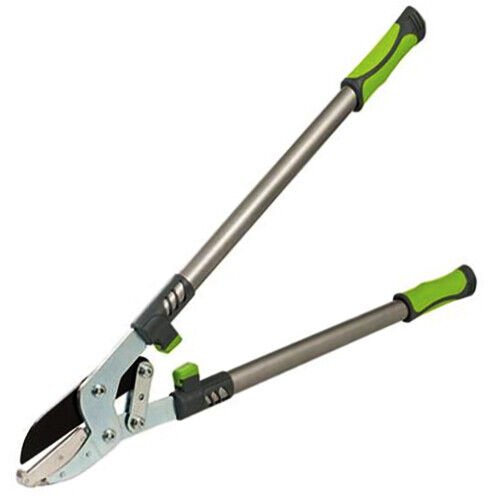
Choosing the Right Ratchet For a Tree Lopper
[ad_1]
Anvil
Depending on your pruning needs, there are many types of tree loppers on the market. Using the right tool can save you time, energy and most importantly, money. If you do not have the right tool, you may end up with plants that look worse than they did when you started. A little homework can ensure that you have the right tool for the job.
The best way to determine which loppers are right for you is to consider your specific pruning needs and style. For instance, loppers that are too heavy can exert too much strain on your arms and shoulders. Also, some types of tree loppers are not compatible with others. You may also want to consider loppers that feature a telescopic handle, which will extend your reach.
In general, a lopper should be lightweight and durable. A quality blade should be made of hardened steel and will hold its own. The best blades are also less likely to bend. You may also want to consider a model that features an Interlocken handle, which allows the tool head to lock into the handle without toppling over a pole.
When weighing the merits of a particular lopper, you may want to consider features such as a telescopic handle, which can extend your reach and decrease arm fatigue. If you’re pruning a large tree, you may also want to consider a ratcheting anvil, which is designed to cut through tough branches. This is especially useful for cutting back dead or dying wood.
In addition to the aforementioned features, you may also want to consider a model that is easy to maneuver. This will allow you to get into the nooks and crannies of the trees without tearing yourself or your limbs to shreds. The best tree loppers are also lightweight, which makes them easy to handle. A model that is lightweight can also allow you to perform more efficient pruning. For instance, it is possible to get branches up to two inches thick with a ratcheting anvil.
Ratchet
Choosing the right ratchet for tree loppers can be an important task, as different brands will differ in their features and advantages. In order to make the most out of your purchase, you should be familiar with the various types and models available. You’ll also want to consider the weight and size of the product.
Loppers come in a variety of lengths and styles, ranging from basic manual models to telescoping models. A basic manual model works best on narrow branches. You’ll also want to consider the type of cutting action used. Compound action loppers provide the most cutting power and are suitable for large branches. They also tend to be heavier. You can also find telescoping models, which are perfect for trimming living plants.
Whether you’re cutting a branch or brush, the Fiskars Ratchet Drive Lopper is ideal for your needs. It has a steel exoskeleton cutting head and FiberComp(r) handles. The FiberComp(r) handles are made from a material that is similar to hard plastic, but is designed to prevent slipping.
The blades on this lopper are made of SK-5 high carbon steel, which is more durable and easily sharpened. Carbon steel is also less expensive than stainless steel. However, it is more prone to rusting. It’s best to keep your loppers well-lubricated after each use. You can also use a basic sharpening stone to keep the blades sharp.
Compared to a compound lopper, ratchet loppers are more precise and easier to use. They feature a ratcheting gear-bypass fulcrum, which allows you to increase the pressure on the cutting blades.
Ratcheting loppers also come with an aluminum anvil, which prevents the cutting blades from rusting. The handles are also curved inward, which maximizes the cutting head’s opening.
Unlike a compound lopper, ratchet-style loppers allow you to open and close the handles several times to increase the pressure on the blades. This makes it easier to get a better grip on the branch. The handles also come with a non-stick coating that is corrosion resistant.
For a safe and comfortable grip, you’ll want to choose a lopper with an ergonomic SoftGrip coating. This coating prevents blisters and hand fatigue.
[ad_2]